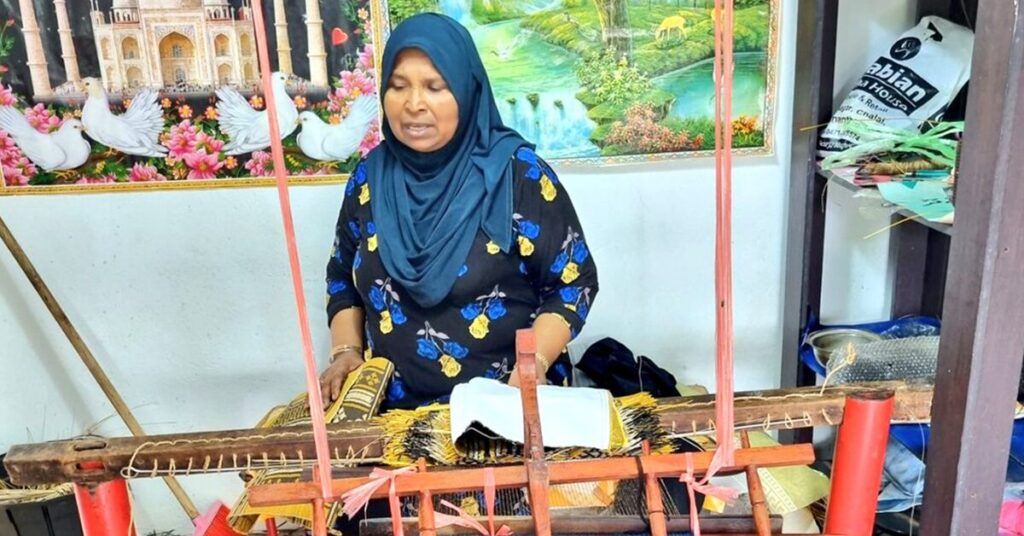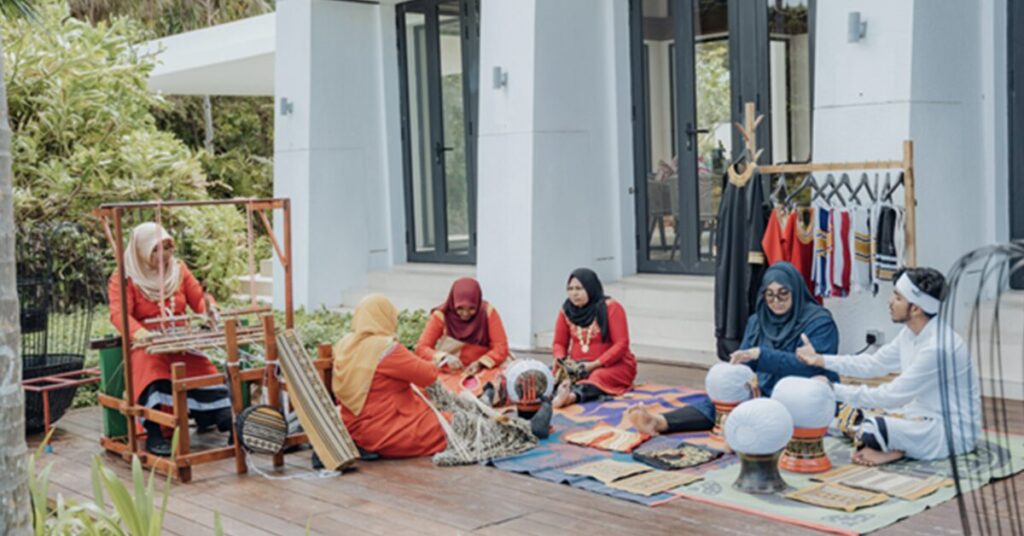Mat making, known as “Thundu Kunaa,” stands as one of the most revered traditional crafts in the Maldives, with a rich heritage dating back hundreds of years. The island of Gdh. Gahdhoo in Gaafu Dhaalu Atoll is particularly celebrated for its intricate, finely woven mats, which hold both practical and symbolic importance in Maldivian culture. These mats are not only used for seating and bedding but are also considered treasured pieces of art, embodying the skills, dedication, and cultural values of the island’s mat makers.

A Craft Rooted in History and Culture
Historically, mat making in the Maldives has played a role not only as a craft but as a means of livelihood and cultural expression. Passed down through generations, mat weaving in Gdh. Gahdhoo has remained largely unchanged since at least the 12th century, according to local oral histories and regional studies on Maldivian crafts. This enduring art is mainly practiced by women in the community, who are highly respected for their intricate craftsmanship. The craft has persisted through historical periods of trade and foreign influence, including the Maldives’ connections with India and Sri Lanka, but has retained its unique Maldivian character.

Traditional Materials and Eco-Friendly Practices
The primary material for Thundu Kunaa is the leaves of the coconut palm, known locally as “Hanikey,” which is abundant on the island. After gathering, these leaves undergo a meticulous drying process and are split into fine, even strips. To add color, artisans traditionally use natural dyes derived from plants, roots, and leaves, such as those from the “Bokkura” plant, which produce deep, earthy tones. This method not only preserves the eco-friendly nature of the craft but also enhances the visual appeal of each piece. The use of these materials highlights the Maldivian emphasis on environmental harmony, with Gdh. Gahdhoo’s mat makers maintaining sustainable practices for generations.
Intricate Weaving Techniques and Designs
Once the materials are ready, skilled artisans begin the painstaking process of weaving, which requires precision, patience, and deep knowledge of traditional techniques. The patterns woven into the mats range from simple geometric designs to elaborate, ornamental motifs reflecting Maldivian cultural symbols. Each mat can take days or even weeks to complete, depending on its complexity, making it a significant achievement for the weaver. The durability of these mats, achieved through tight weaving, has made them ideal for daily use, ceremonial purposes, and as wedding gifts, where they symbolize warmth and hospitality.
Cultural and Economic Significance
Mat making remains an integral part of Gdh. Gahdhoo’s identity and the local economy. Many households on the island participate in the craft, which has seen growing demand from both locals and tourists seeking authentic Maldivian souvenirs. In recent years, Gahdhoo’s mat makers have received national recognition, helping to preserve the craft as a vital part of Maldivian heritage. In 2015, the Maldivian government and local cultural organizations launched initiatives to support traditional mat makers, including training programs and exhibitions to increase appreciation for Thundu Kunaa both domestically and internationally.

Preserving the Craft for Future Generations
Gdh. Gahdhoo remains at the heart of this craft, upholding a tradition that has been part of Maldivian culture for centuries. Mat weaving not only provides income to local families but also fosters community pride, with younger generations learning the skill to continue this important legacy. Visitors to the island often seek out these handwoven mats as unique, meaningful souvenirs that capture the Maldives’ rich cultural heritage, a testament to the blend of artistry, functionality, and tradition that makes Thundu Kunaa an enduring symbol of Maldivian identity.


